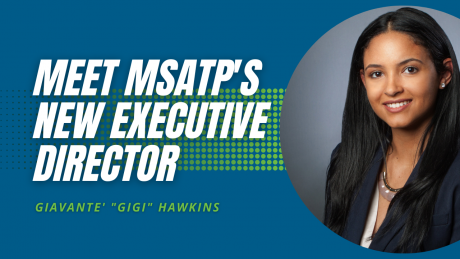
You’re invited to “Summer Wine Tasting.” Tap here to RSVP – Paperless Post Flyer
Pension Relief Coming For Union Workers And Retirees | via Wolters Kluwer IntelliConnect
The Biden Administration announced it will be implementing the American Rescue Plan’s Special Financial Assistance program that will provide financial assistance to struggling multiemployer pension programs.
“Under the program, financially struggling multiemployer pension plans can apply to the PBGC [Pension Benefit Guaranty Corporation] for assistance,” a fact sheet issued July 6, 2022, by the White House states.
PBGC published July 8, 2022, in the Federal Register a final regulation detailing the mechanics of how the SFA program will distribute the $94 billion approved by Congress for this program. It is expected to help about 200 plans that otherwise would have become insolvent in the near term, denying plan participants of receiving their full pension benefits.
“This action will have a significant impact on the lives of workers and their families, and represents one of the most meaningful improvements in our nation’s retirement security in years,” Department of the Treasury Secretary Janet Yellen said in a statement. “In addition, this initiative extends the solvency of the program that insures multiemployer pensions by nearly three decades.”
The White House said multiemployer pension plans that receive funds from this program are expected to remain solvent through 2051 and beyond.
By Gregory Twachtman
Applicability of Section 432(b)(7) Following A Merger Involving Multiemployer Defined Benefit Plan Discussed (Rev. Rul. 2022-13) | via Wolters Kluwer IntelliConnect
The IRS has issued guidance on the applicability of Code Sec. 432(b)(7) following a merger involving a multiemployer defined benefit plan that has received special financial assistance. According to the Service, after a merger of a multiemployer defined benefit pension plan that has received special financial assistance (SFA) from the Pension Benefit Guaranty Corporation (PBGC) with a second multiemployer defined benefit pension plan that has not received SFA, with the second plan designated as the ongoing plan after the merger, the ongoing plan is not deemed to be in critical status under Code Sec. 432(b)(7).
Merger Between Multiemployer Defined Benefit Pension Plans
Plan A and Plan B were multiemployer defined benefit pension plans. The merger agreement between Plan A and Plan B designated Plan B as the ongoing plan for the plan years beginning on or after January 1, 2024 (the effective date of the merger) and provided that Plan B would obtain all of Plan A’s assets and assumed all of its liabilities. In accordance with the designation of Plan B as the ongoing plan, all plan-related documentation and reports with respect to all plan years beginning on or after January 1, 2024, including Form 5500, Annual Return/Report of Employee Benefit Plan, were in the name of Plan B and use Plan B’s EIN and the plan number.
Code Sec. 432(b)(7) provides for deemed critical status, applies only to an eligible multiemployer plan described in Code Sec. 432(k)(3) that applies for and receives SFA. Thus, if a multiemployer plan that is eligible for and has received SFA merges into a plan that did not receive SFA, and, under the terms of the merger, the plan that did not receive SFA is designated as the ongoing plan, that ongoing plan is not deemed to be in critical status under Code Sec. 432(b)(7). Because Plan B was not an eligible multiemployer plan described in Code Sec. 432(k)(3) that may apply for and receive SFA under section 4262 of ERISA, Code Sec. 432(b)(7) did not apply to Plan B. Accordingly, Plan B was not deemed to be in critical status pursuant to Code Sec. 432(b)(7) as a result of the merger with Plan A for the plan years beginning on or after the effective date of the merger.
IRS Webinar: Accessing IRS Online Services – Understanding the Identity Verification Process | Tuesday, July 19, 2021 @ 2 PM EST
This webinar discusses:
- Improved access to IRS online services
- What this means for e-Services users
- IRS’s new identity verification and authentication platform
- Registration overview
- Key takeaways
- Plus, a live Q&A
1 CE credit will be offered for this webinar. Category: Federal TaxQuestions? Email cl.sl.web.conference.team@irs.gov.
Register here: Accessing the IRS: Understanding the Identity Verification Process (webcaster4.com)
Gig Economy Worker’s Tax Responsibilities | IRS Tax Tip 2022-97
Gig work is taxable and must be reported as income on the worker’s tax return. Examples of gig work include:
- Driving a car for booked rides
- Selling goods online
- Renting out property
- Providing other on-demand work
Here are some things gig workers should know to stay on top of their tax responsibilities.
Changes to the e-file Application Fingerprinting Process | IRS QuickAlert
Beginning September 25, 2022, the IRS will implement a new electronic fingerprinting process for e-file applicants. Individuals will be required to use the IRS authorized vendor for fingerprinting. Each new Principal and Responsible Official listed on a new e-file application or added to an existing application needing fingerprints, must schedule an appointment with the IRS authorized vendor.
The cutoff date to mail paper fingerprint cards (Form FD-258) to the IRS is August 15, 2022. Fingerprint cards must be postmarked by August 15, 2022, and the application must be submitted prior to mailing the fingerprint cards.
The IRS will not process fingerprint cards postmarked after August 15, 2022. Customers needing fingerprints will need to wait until September 25, 2022, to schedule an electronic fingerprinting appointment. On September 25, 2022, you can schedule your appointment by accessing the scheduling link located on the e-file application summary page.
Instructions for scheduling an appointment will be provided upon submitting an e-file application and on IRS.gov. The IRS will provide additional information about the new fingerprinting process on September 25, 2022. Please continue to check the Become an Authorized e-file Provider webpage for the most up-to-date information,
Electronic Tax Administration Advisory Committee Annual Report to Congress
The ETAAC released its annual report to Congress, featuring recommendations focused on budget support for the IRS and enhancements to e-filing. Read the report here.









